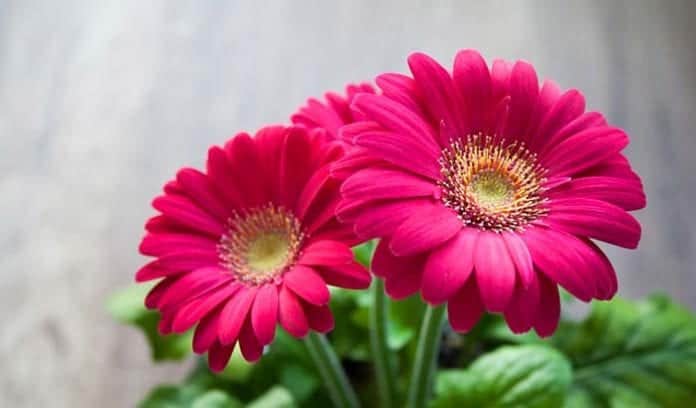
Exotic Flowers: By definition, exotic plants[1] are plants that have been introduced to a region or ecosystem where they are foreign or non-native.
Often, these species of plants become invasive and dominate over the place. This tendency is thought to cause imminent damage to their neighboring plants and animals, and the environment as well.
Did you know that many known cultivated ornamental flowering plants are exotic?
Table of Contents
- Exotic Flowers
- 1. Brazilian Pepper (Schinus Terebinthifolius)
- 2. Melaleuca (Melaleuca Quinquenervia)
- 3. Latherleaf (Colubrina Asiatica)
- 4. Australian Pine (Casuarina Equisetifolia)
- 5. Dutch Amaryllis (Hippeastrum Reginae)
- 6. Seaside Mahoe (thespesia Populnea)
- 7. Anthurium (Anthurium Sp.)
- 8. Pale Alyssum (Alyssum Alyssoides)
- 9. Amaranth (Amaranthus Sp.)
- 10. Fiddleneck (Amsinckia Lycopsoides)
- 11. Bindweed (Convolvulus Arvensis)
- 12. Horseweed (Erigeron Canadensis)
- 13. Lily of the Valley (Convallaria Majalis)
- 14. Ragweed (Ambrosia Psilostachya)
- 15. Mayweed Chamomile (Anthemis Cotula)
- 16. Caraway (Carum Carvi)
- 17. Asparagus (Asparagus officinalis)
- 18. Spotted Knapweed (Centaurea Maculosa)
- 19. Bull Thistle (Cirsium Vulgare)
- 20. American Lotus (Nelumbo Lutea)
- 21. Filaree (Erodium Cicutarium)
- 22. St. John’s Wort (Hypericum Perforatum)
- 23. Scentless Chamomile (Tripleurospermum inodorum)
- 24. Timothy (Phleum Pratense)
- 25. Calla Lily (Salvinia Molesta)
Exotic Flowers
1. Brazilian Pepper (Schinus Terebinthifolius)
| Plantae | Sapindales | Anacardiaceae | Schinus | Schinus terebinthifolius |
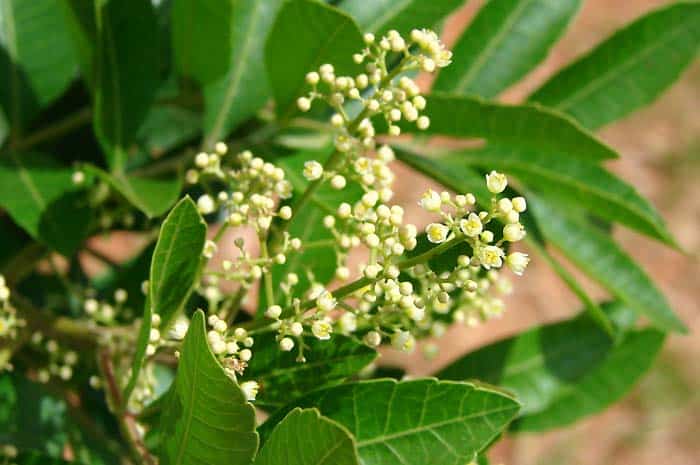 Coming from the plant Family Anacardiaceae, the Brazilian pepper plant[2] is a flowering shrub that can reach up to 30 feet tall. These flowering plants are also characterized by having very bright red berries and green leaves.
Coming from the plant Family Anacardiaceae, the Brazilian pepper plant[2] is a flowering shrub that can reach up to 30 feet tall. These flowering plants are also characterized by having very bright red berries and green leaves.
- This plant, endemic to Brazil, Paraguay, and Argentina, was introduced to Florida in the mid-1800s as an ornamental plant. However, due to its ability to grow quickly, this plant can easily dominate[3] an area.
- It can compete with nearby plants and obtain light, soil minerals, and moisture. It can also release chemicals that can stop the growth of other plants; hence, the native plants cannot survive.
- Its flowers, which bloom in September and October, are white [4] and become important sources of nectar for insects like bees.
Suggested Reading:
6 Best Indoor Vegetable Garden Systems Reviews
![]()
2. Melaleuca (Melaleuca Quinquenervia)
| Plantae | Myrtales | Myrtaceae | Melaleuca | Melaleuca quinquenervia |
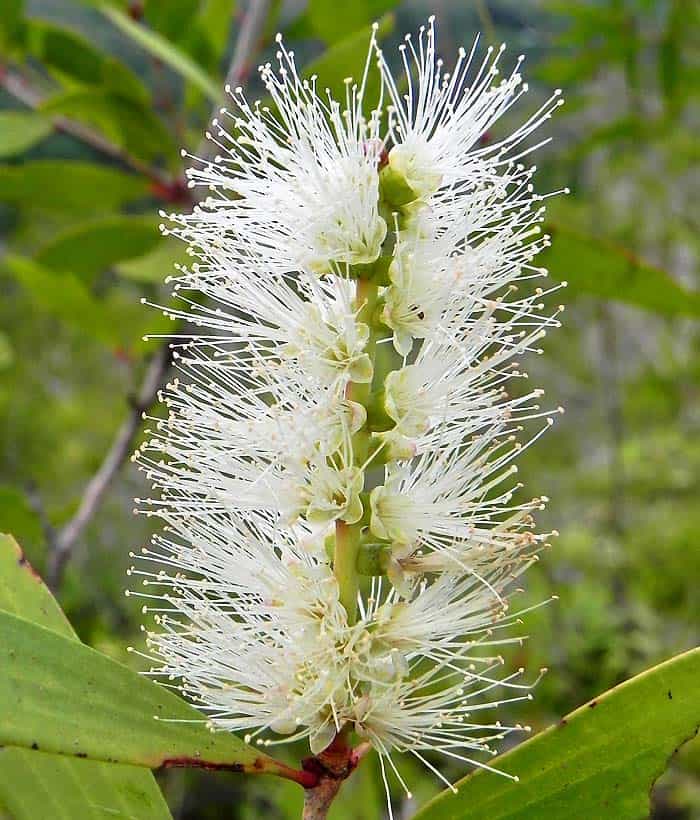 Known to be an aggressive invader , the Melaleuca is a flowering plant that can grow in almost any kind of habitat. Amazingly, it can turn any of these habitats into a dense forest in which nothing else can live.
Known to be an aggressive invader , the Melaleuca is a flowering plant that can grow in almost any kind of habitat. Amazingly, it can turn any of these habitats into a dense forest in which nothing else can live.
- Originally, this plant was imported from Australia in the early 1900s to help dry the Everdes. This is because of the Melaleuca’s ability to easily dry up an area by using up to five times more water than the sawgrass.
- This plant, also known as the “Paper-bark“, is characterized by having barks that can be peeled into very thin sheets.
![]()
3. Latherleaf (Colubrina Asiatica)
| Plantae | Rosales | Rhamnaceae | Colubrina | Colubrina asiatica |
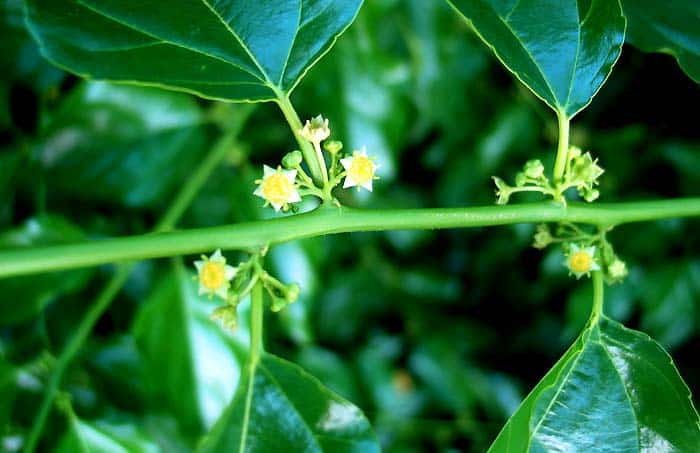 Characterized by thick and massive vines, the Latherleaf[5] Colubrina asiatica can easily grow quickly in coastal hardwood forests. It has greenish exotic flowers that occur in alternate inflorescence.
Characterized by thick and massive vines, the Latherleaf[5] Colubrina asiatica can easily grow quickly in coastal hardwood forests. It has greenish exotic flowers that occur in alternate inflorescence.
- This plant can destroy any habitat for plant and animal life by interfering with water and nutrient cycles. As a vine, it can also grow massively and destroy any ground plants by blocking the light source from the sun.
- In the 1850s, this Asian plant was introduced to Jamaica and gradually dominated Florida after that.
![]()
4. Australian Pine (Casuarina Equisetifolia)
| Plantae | Fagales | Casuarinaceae | Casuarina | Casuarina equisetifolia |
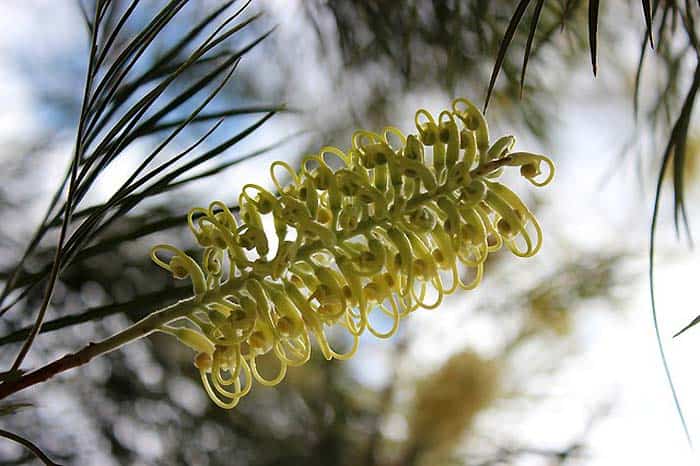 Also known as the “Iron Wood” , the Australian pine is a type of tree that was imported from Australia for its timber and shade. However, due to the ability of these trees to flower all year round, they can spread quickly and easily dominate an area.
Also known as the “Iron Wood” , the Australian pine is a type of tree that was imported from Australia for its timber and shade. However, due to the ability of these trees to flower all year round, they can spread quickly and easily dominate an area.
- This tree can also easily grow thick foliage, making the plants below it devoid of sunlight. Its exotic flowers are characterized by apetalous flowers arranged in catkin inflorescence.
- During storms, they also facilitate erosion, making it hard for sea turtles to nest.
![]()
5. Dutch Amaryllis (Hippeastrum Reginae)
| Plantae | Asparagales | Amaryllidaceae | Hippeastrum | Hippeastrum reginae |
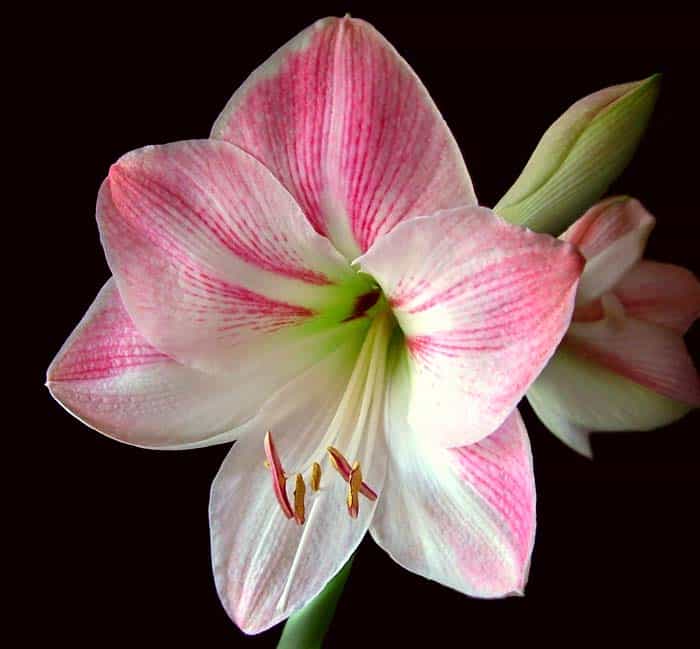 The Dutch Amaryllis is an indoor exotic flowering plant native to some regions in southern Africa and the United States.
The Dutch Amaryllis is an indoor exotic flowering plant native to some regions in southern Africa and the United States.
- Originally, the genus name Hippeastrum was given by Herbert and was meant to denote a “Knight’s star lily” but apparently, he was also uncertain about that description.
- The exotic flowers of this plant are characterized by having a bulb-like appearance and come in colors like red, pink, orange, and white.
![]()
6. Seaside Mahoe (thespesia Populnea)
| Plantae | Malvales | Malvaceae | Thepesia | Thespesia populnea |
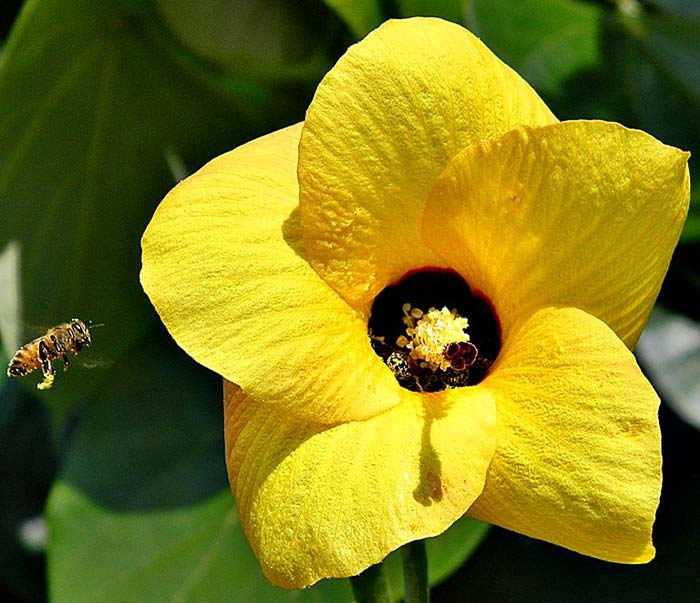 Coming from the plant Family Malvaceae (Mallow Family), the Seaside Mahoe is an arborescent flowering shrub that can thrive in a wide range of habitat.
Coming from the plant Family Malvaceae (Mallow Family), the Seaside Mahoe is an arborescent flowering shrub that can thrive in a wide range of habitat.
- Originally, this plant was imported as a drought-tolerant and salt-resistant plant that can be used as an ornamental plant for gardening.
- This plant can grow massively and easily crowd out other plants, inhibiting its neighboring plants’ growth.
- This plant, also referred to as the Portia tree[6], is believed to have originated in India.
Suggested Reading:
10 Best Low Maintenance Plants For Indoors
![]()
7. Anthurium (Anthurium Sp.)
| Plantae | Alismatales | Araceae | Anthurium | Anthurium sp. |
 The Anthurium is an exotic flowering species native to countries like Mexico and Argentina. It is characterized by its distinct spadix flower and bright red spathe.
The Anthurium is an exotic flowering species native to countries like Mexico and Argentina. It is characterized by its distinct spadix flower and bright red spathe.
- Most of the time, Anthuriums grow as epiphytes of other plant species. They grow upon other plants and obtain the necessary nutrients and moisture from them to live.
- This plant is also called as the Flamingo flower or Laceleaf.
![]()
8. Pale Alyssum (Alyssum Alyssoides)
| Plantae | Brassicales | Brassicaceae | Alyssum | Alyssum alyssoides |
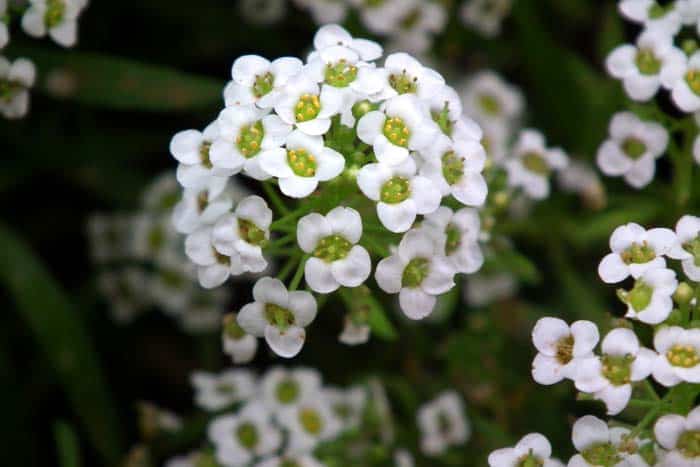 The next exotic flower in this list is the Pale alyssum[7] , a plant that is endemic to both Asia and Europe and has been introduced to North America.
The next exotic flower in this list is the Pale alyssum[7] , a plant that is endemic to both Asia and Europe and has been introduced to North America.
- The Pale Alyssum is a member of the plant Family Brassicaceae (Mustard Family) and is known by the common name “Pale Madwort“.
- This plant is characterized by having yellow-white stellate exotic flowers and can grow up to 40 centimeters tall.
![]()
9. Amaranth (Amaranthus Sp.)
| Plantae | Caryophyllales | Amaranthaceae | Amaranthus | Amaranthus sp. |
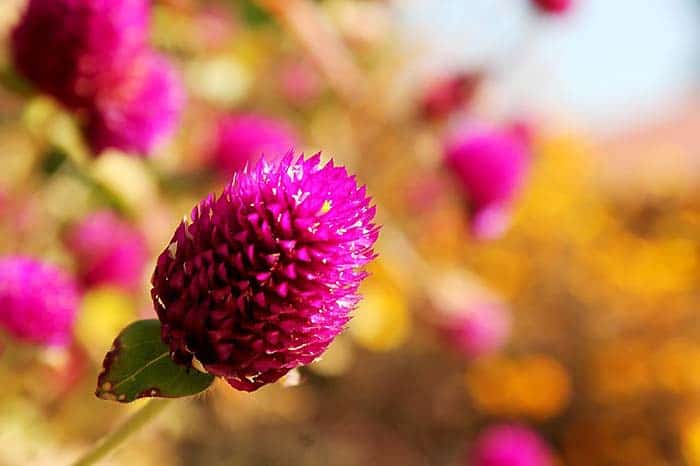 Also known as the Redroot Pigweed, the Amaranth[8] Amaranthus retroflexus is an herbaceous plant that can grow up to 2 meters tall.
Also known as the Redroot Pigweed, the Amaranth[8] Amaranthus retroflexus is an herbaceous plant that can grow up to 2 meters tall.
- It is easily recognizable due to its magenta-colored catkin flowers that bloom during summer and autumn. Aside from that, it has egg-shaped leaves and somewhat hairy stems and branches.
- This plant is believed to be endemic in the regions of central, eastern, and northern America. Still, it has already been widespread throughout the temperate regions of the northern and southern hemispheres.
![]()
10. Fiddleneck (Amsinckia Lycopsoides)
| Plantae | unplaced | Boraginaceae | Amsinckia | Amsinckia lycopsoides |
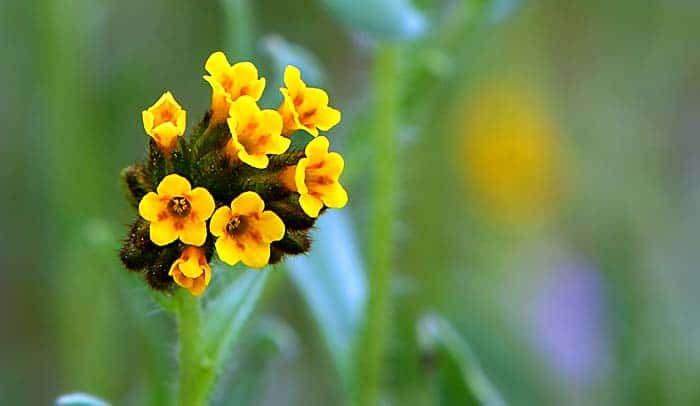 Indigenous to California, fiddlenecks[9] are annual broadleaf plants that thrive in a wide range of habitats from grasslands, vineyards, and even disturbed places like roadsides.
Indigenous to California, fiddlenecks[9] are annual broadleaf plants that thrive in a wide range of habitats from grasslands, vineyards, and even disturbed places like roadsides.
- When ingested, fiddlenecks can be toxic to livestock. Sometimes, fiddlenecks can be problematic to crop fields as they can easily outgrow the cop themselves.
- Fiddlenecks have very distinguishable flower heads curled like fiddlenecks (hence the name) and yellow funnel-like exotic flowers.
![]()
11. Bindweed (Convolvulus Arvensis)
| Plantae | Solanales | Convolvulaceae | Convolvulus | Convolvulus arvensis |
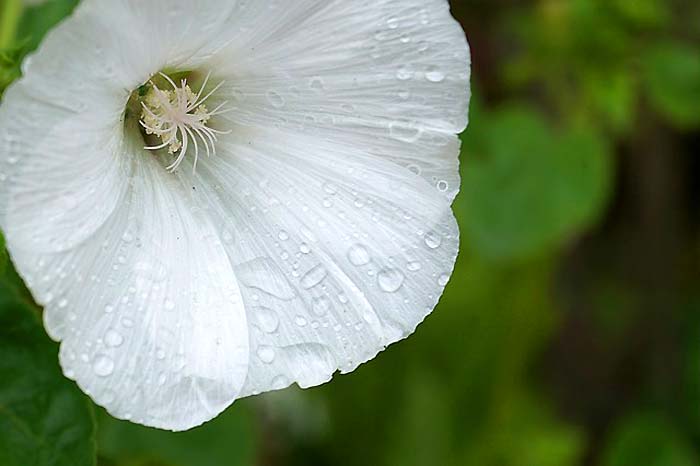 Often referred to as “wild Morning Glory“, the bindweed[10] Convolvulus truly looks like one. It is a climbing vine that wraps itself around poles or other objects.
Often referred to as “wild Morning Glory“, the bindweed[10] Convolvulus truly looks like one. It is a climbing vine that wraps itself around poles or other objects.
- The bindweed is easily distinguishable due to its pink trumpet-shaped exotic flowers and arrowhead-shaped leaves.
- The bindweed is very problematic due to a lot of reasons. The growth of bindweed is tough to control as it has an extensive root system. Another reason is that it can produce seeds that can remain viable for many years.
![]()
12. Horseweed (Erigeron Canadensis)
| Plantae | Asterales | Asteraceae | Erigeron | Erigeron canadensis |
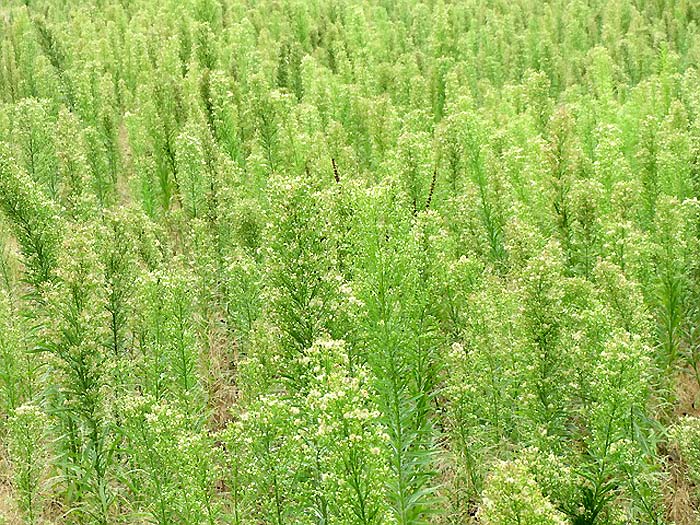 Also called as the “Mares tail[11]“, the horseweed is a summer annual plant characterized foliage growing as rosette around a crown. This plant is widely distributed among various habitats as it can live on agricultural lands and even disturbed areas.
Also called as the “Mares tail[11]“, the horseweed is a summer annual plant characterized foliage growing as rosette around a crown. This plant is widely distributed among various habitats as it can live on agricultural lands and even disturbed areas.
- This plant can grow rapidly and is a strong competitor for water. It is also characterized by having daisy-like flower heads.
- This plant is indigenous to North America and has since then become widespread in Asia and Europe.
![]()
13. Lily of the Valley (Convallaria Majalis)
| Plantae | Asparagales | Asparagaceae | Convallaria | Convallaria majalis |
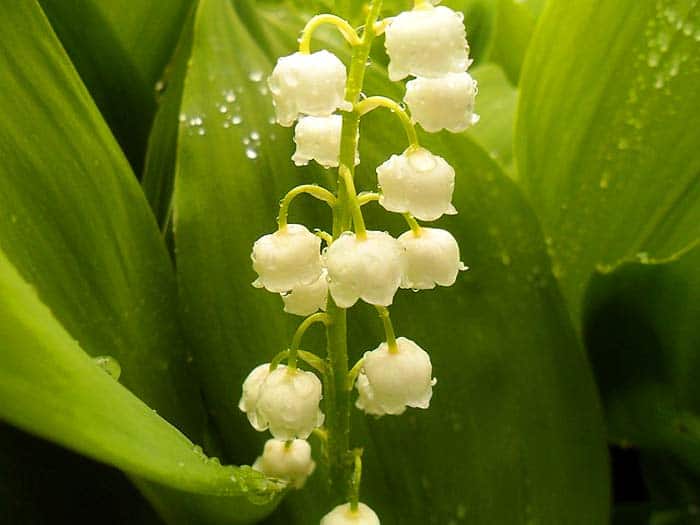 The next exotic flower in this list is the Lily of the Valley[12] which is a perennial herbaceous plant that is considered to be highly invasive in the regions of North America.
The next exotic flower in this list is the Lily of the Valley[12] which is a perennial herbaceous plant that is considered to be highly invasive in the regions of North America.
- This plant is endemic to most regions in Europe but also occurs in some Asian countries like Japan.
- This plant is very toxic, so ingestion is not recommended. Usually, it costs an upset stomach and blurred vision.
- Its flowers are characterized by six white bracts (sometimes pink) fused to a bell-shaped structure. These exotic flowers have a lovely smell that blossoms in late spring.
![]()
14. Ragweed (Ambrosia Psilostachya)
| Plantae | Asterales | Asteraceae | Ambrosia | Ambrosia psilostachya |
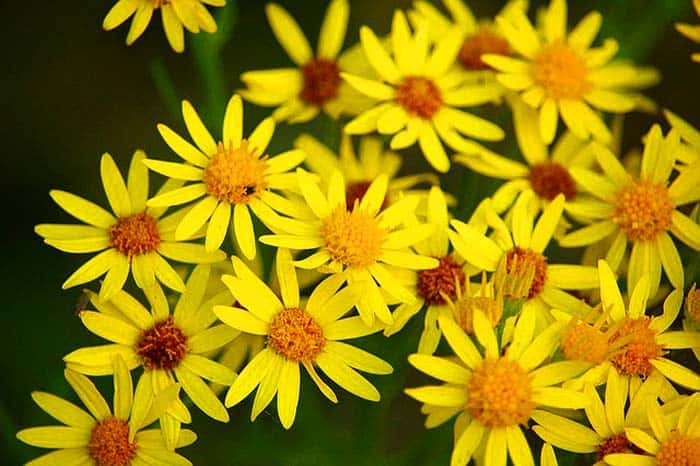 Native to North America, the Ragweed[13] is a type of plant species with rough hair (trichome) systems, and distinctive green flowers put up in small heads.
Native to North America, the Ragweed[13] is a type of plant species with rough hair (trichome) systems, and distinctive green flowers put up in small heads.
- The Ragweed indigenous to North America is a plant introduced from Europe during World War I. It is characterized by staminate and pistillate flowers, which are white and purple, respectively.
- The Ragweed pollen is an allergen that is airborne and thus can travel distances.
- Its genus name Ambrosia is the Greek term for “food of the gods“.
![]()
15. Mayweed Chamomile (Anthemis Cotula)
| Plantae | Schizaeales | Lygodiaceae | Anthemis cotula | Anthemis cotula |
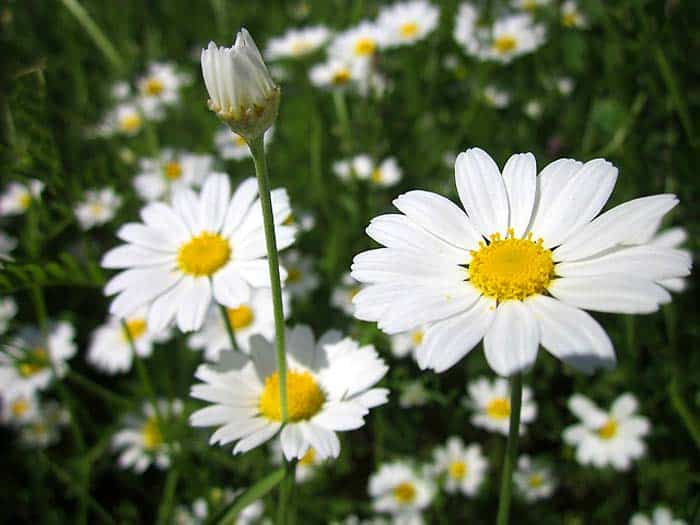 Also referred to as the “Stinking chamomile” or “Dog fennel“, the Mayweed chamomile is living up to those names as it has a very distinctive unpleasant smell.
Also referred to as the “Stinking chamomile” or “Dog fennel“, the Mayweed chamomile is living up to those names as it has a very distinctive unpleasant smell.
- Despite that, this plant member of the Family Asteraceae is very attractive, with yellow disc flowers surrounded by white ray flowers.
- This plant is indigenous to the Mediterranean but has now dominated California, Nevada, and the Pacific Northwest.
- This plant can overgrow and is very destructive to nearby plants.
![]()
16. Caraway (Carum Carvi)
| Plantae | Apiales | Apiaceae | Lygodium | Lygodium microphyllum |
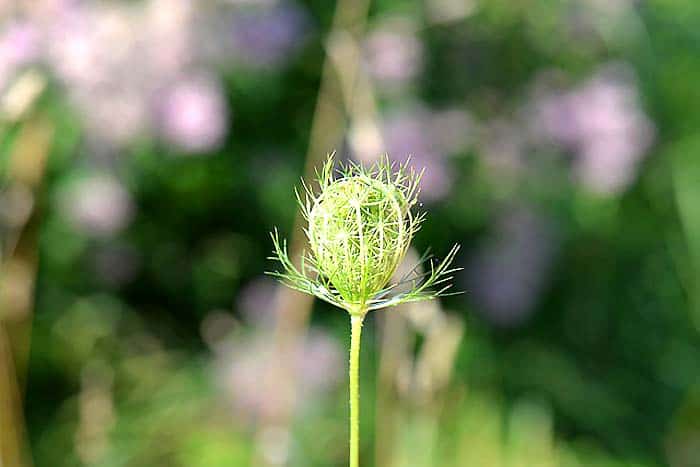 The Caraway[14] is a biennial plant that is endemic to Europe and some parts of Asia and North Africa.
The Caraway[14] is a biennial plant that is endemic to Europe and some parts of Asia and North Africa.
- This plant is described to have hollowed branched stems, long tap roots, and yellow umbellate flowers.
- This plant is known to bear several medicinal properties and can be consumed as boiled (roots), used in salads and soups (leaves), and used to make breads (seeds).
![]()
17. Asparagus (Asparagus officinalis)
| Plantae | Asparagales | Asparagaceae | Asparagus | Asparagus officinales |
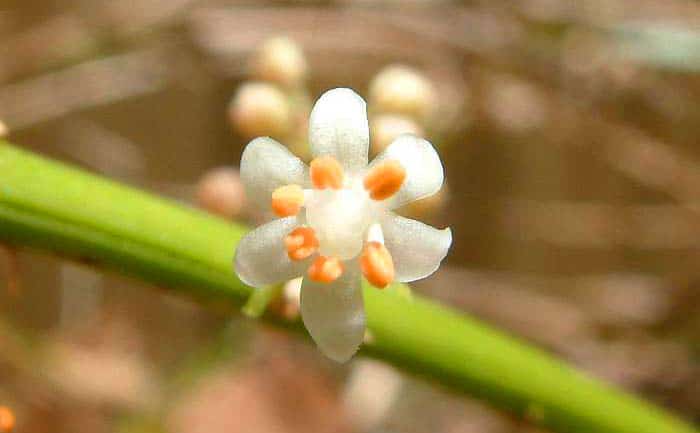 The next exotic flowering plant in this list is the common vegetable we know: the asparagus(also garden asparagus). Indigenous to the coasts of East Asia and Europe, this plant has been widely planted for more than 2000 years! Years after, this plant was introduced to North America and some parts of Australia.
The next exotic flowering plant in this list is the common vegetable we know: the asparagus(also garden asparagus). Indigenous to the coasts of East Asia and Europe, this plant has been widely planted for more than 2000 years! Years after, this plant was introduced to North America and some parts of Australia.
- Contrary to the common belief of being a mere vegetable, this plant has bell-shaped exotic flowers that range from yellow to light greenish dioecious flowers.
- In Australia[15], the invasion of asparagus has already resulted in the decline of the number of native plant species. Hence, several modes for biocontrol have already been targeted.
- The word “asparagus” literally means “sprout” or “shoot” in Greek. This is related to the fact that asparagus is an edible shoot that grows on rhizomes in the soil.
![]()
18. Spotted Knapweed (Centaurea Maculosa)
| Plantae | Asterales | Asteraceae | Centaurea | Centaurea maculosa |
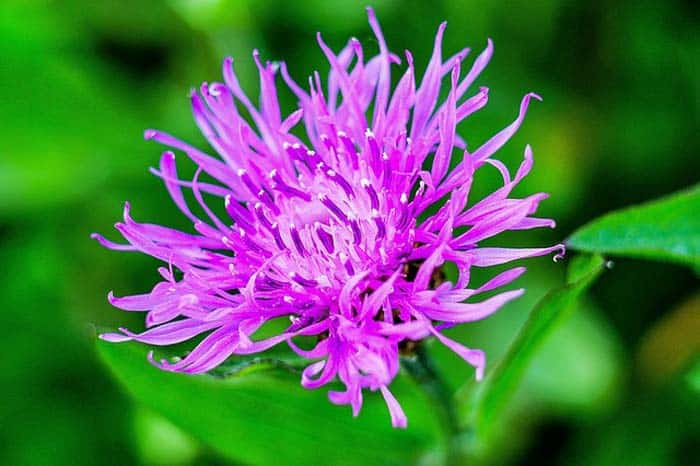 The Spotted knapweed[16] is a flowering plant native to Europe and Asia and since then has become very destructive to farmlands of the western United States.
The Spotted knapweed[16] is a flowering plant native to Europe and Asia and since then has become very destructive to farmlands of the western United States.
- This plant is shown to have pink to purple flowers that are surrounded by green bracts with black tips.
- This Spotted knapweed is a very competitive plant as its tap root can suck water up faster than its neighboring plants. In addition to that, it releases a toxin from its roots that can somehow slow down the growth of nearby plants.
![]()
19. Bull Thistle (Cirsium Vulgare)
| Plantae | Asterales | Asteraceae | Cirsium | Cirsium vulgare |
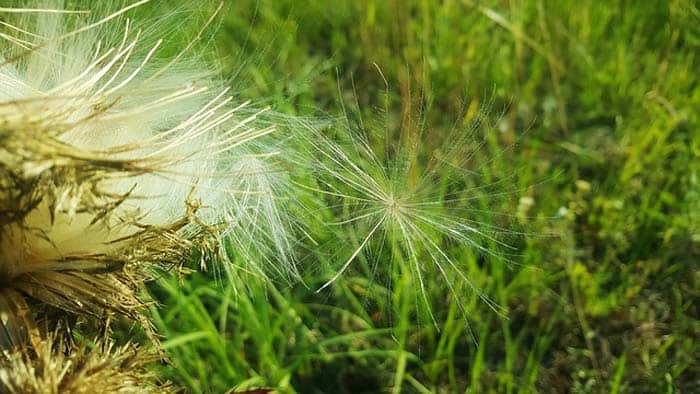 The Bull thistle Cirsium vulgare is a biennial flowering plant indigenous to Asia and Europe but was imported to North America. This plant, commonly found in vacant lots and roadsides, is sometimes problematic due to its wide infestations.
The Bull thistle Cirsium vulgare is a biennial flowering plant indigenous to Asia and Europe but was imported to North America. This plant, commonly found in vacant lots and roadsides, is sometimes problematic due to its wide infestations.
- Interestingly, this plant prefers disturbed areas with moist to dry soils. However, it can also dominate the forests and hinder the growth of native plants.
- This plant is easily recognized due to its pink magenta flower heads with deeply lobed and hairy leaves.
![]()
20. American Lotus (Nelumbo Lutea)
| Plantae | Proteales | Nelumbonaceae | Nelumbo | Nelumbo lutea |
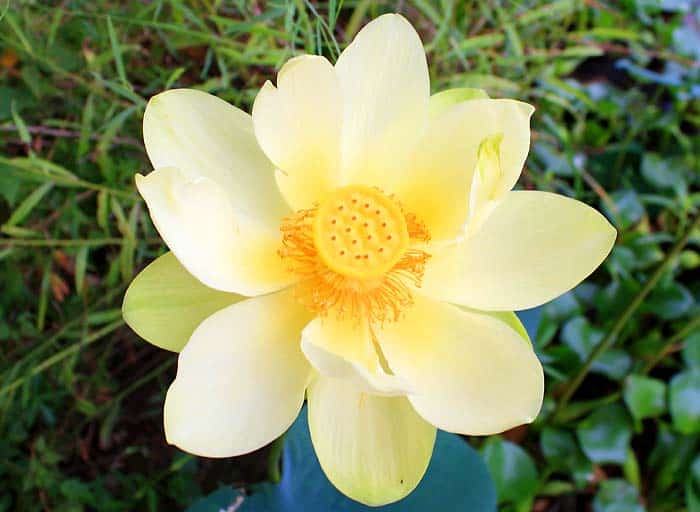 Commonly found in the wet regions of the United States, the American lotus is a type of aquatic flowering plant characterized by huge circular leaves linked to the central flower.
Commonly found in the wet regions of the United States, the American lotus is a type of aquatic flowering plant characterized by huge circular leaves linked to the central flower.
- The exotic flowers contain both the stamen and pistil but only blossom for a few days. Interestingly, this plant (specifically its leaves) can repel water due to its waxy properties.
- As an invasive[17] species, it can easily dominate the wetlands and prevent the growth of other aquatic plants.
![]()
21. Filaree (Erodium Cicutarium)
| Plantae | Geraniales | Geraniaceae | Erodium | Erodium cicutarium |
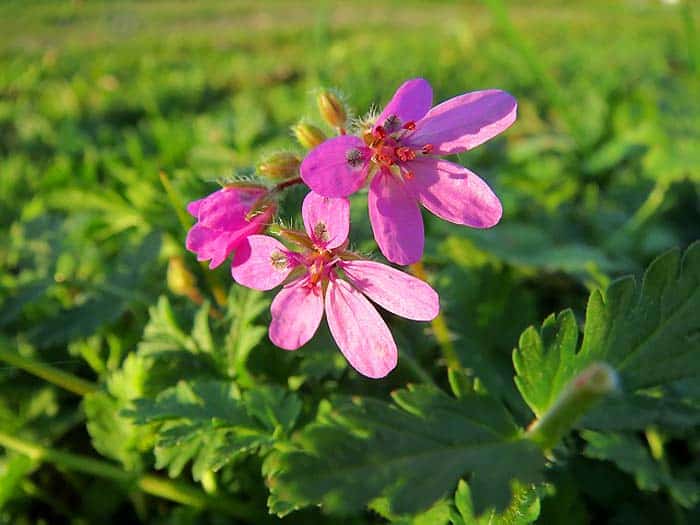 Widespread throughout California and other parts of North America, the Filaree plant[18] is a low-growing flowering plant with broad foliage. Its flowers have five pink to red petals and leaves forming rosettes very close to the ground.
Widespread throughout California and other parts of North America, the Filaree plant[18] is a low-growing flowering plant with broad foliage. Its flowers have five pink to red petals and leaves forming rosettes very close to the ground.
- Interestingly, this plant is edible, which has a flavor likened to parsley when picked young. In addition to that, these exotic flowers are also good sources of honey.
- This plant originated from Europe and Asia and was established in North America in the 1760s.
![]()
22. St. John’s Wort (Hypericum Perforatum)
| Plantae | Malpighiales | Hypericaceae | Hypericum | Hypericum perforatum |
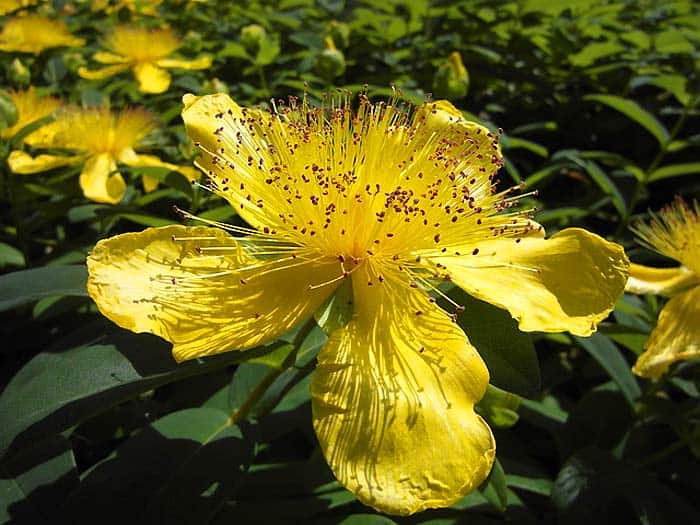 The St. John’s wort Hypericum perforatum is a flowering plant indigenous to Europe and Asia but has already been naturalized to temperate regions as an invasive species.
The St. John’s wort Hypericum perforatum is a flowering plant indigenous to Europe and Asia but has already been naturalized to temperate regions as an invasive species.
- The name “St. John’s wort” is derived from its blooming and harvesting season, which often occurs on St. John’s Day (June 24).
- The exotic flowers of this plant come in cyme inflorescence at the upper end of branches and blossom in the late spring or early summer.
- In medicine, the St. John’s wort is very popular for treating depression[19].
![]()
23. Scentless Chamomile (Tripleurospermum inodorum)
| Plantae | Asterales | Asteraceae | Tripleurospermum | Tripleurospermum inodorum |
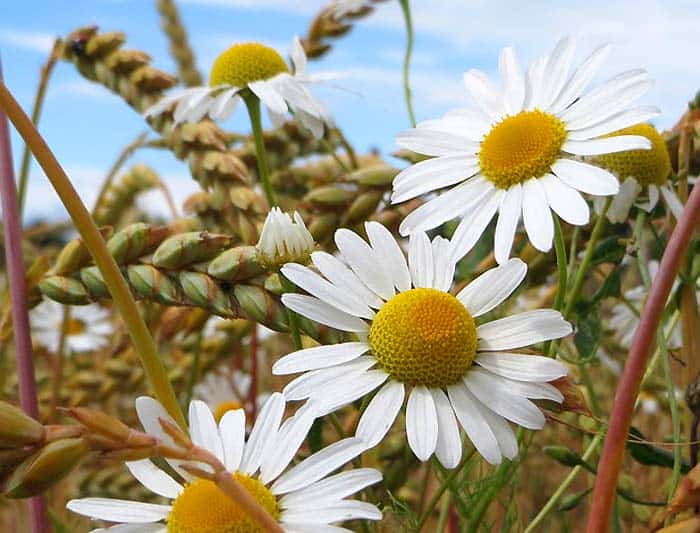 In the 1930s, the Scentless Chamomile[20] was introduced from Europe to Canada where it has become invasive.
In the 1930s, the Scentless Chamomile[20] was introduced from Europe to Canada where it has become invasive.
- At present, the overproliferation of the Scentless Chamomile is a widespread problem in Alberta as these plants have already dominated the roadsides and croplands.
- This flowering plant has distinctive finely divided leaves and numerous flowers on each flowering stem.
- The Scentless Chamomile is a very aggressive plant that can grow rapidly once established on the soil.
![]()
24. Timothy (Phleum Pratense)
| Plantae | Poales | Poaceae | Phleum | Phleum pratense |
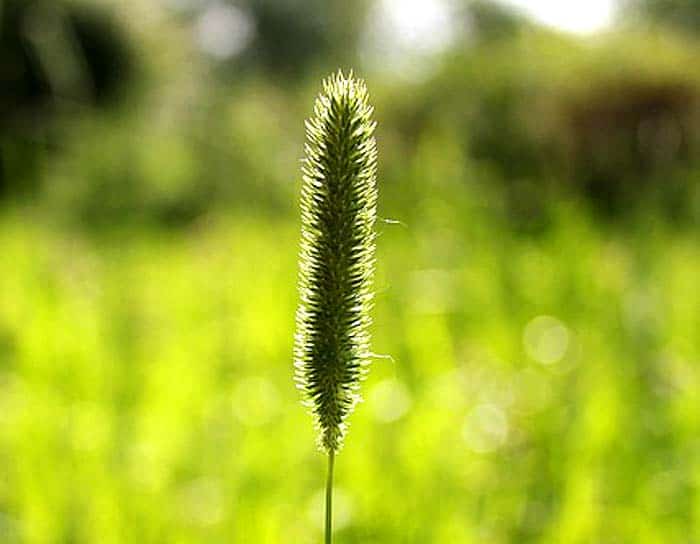 The Timothy[21] is a grass indigenous to Europe, North Africa, and Asia and was since then naturalized to different parts of America.
The Timothy[21] is a grass indigenous to Europe, North Africa, and Asia and was since then naturalized to different parts of America.
- This plant came from Timothy Hanson, who promoted it as a pasture grass in the 18th century.
- It is characterized by having these exotic flowers (with pink stamen) arranged in spikes. This plant becomes very distinctive, especially during its blooming season when it produces its long narrow seed head.
- True to what Hanson had promoted, the Timothy is important for grazing animals like horses and sheep, and other animals as well.
![]()
25. Calla Lily (Salvinia Molesta)
| Plantae | Alismatales | Araceae | Zantadeschia | Zantadeschia aethiopica |
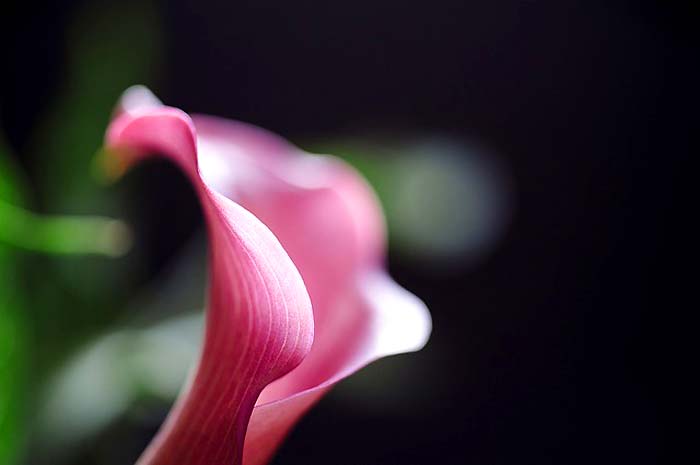 Last but not the least is the Calla lily[22] Zantadeschia aethiopica which is endemic to the regions of southern Africa. This flowering plant usually lives in cold and wet areas like ponds or riverbanks.
Last but not the least is the Calla lily[22] Zantadeschia aethiopica which is endemic to the regions of southern Africa. This flowering plant usually lives in cold and wet areas like ponds or riverbanks.
- The central yellow flowers, which occur in a spadix, are surrounded by a white-colored spathe. However, some species of Zantedeschia also have orange or purple bracts.
- Despite its beauty, this flowering plant is extremely poisonous, especially when ingested.
![]()
Now, which among the mentioned exotic flowers did you find most interesting?
![]()





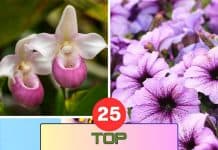
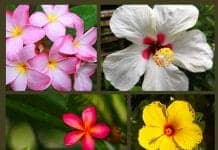


















[…] 55-acre land has 26 greenhouses and has over 700 types of plants, including exotic flowering plants. Moreover, it is home to thousands of butterflies and many species of birds. The star pond also […]